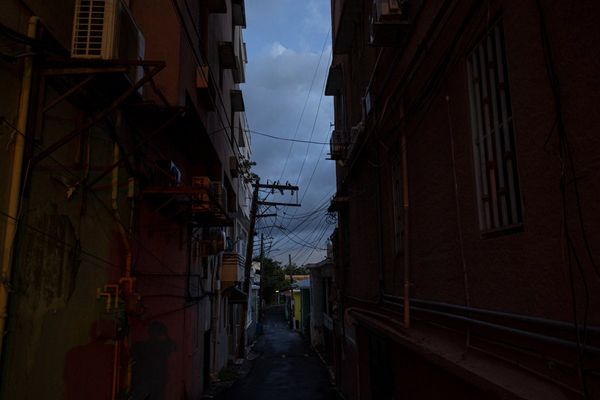
Recently, social media feeds have been awash with hyper-stylised AI-generated portraits from apps like Lensa. Some are beautiful, breathtaking even. And that’s partly due to how much they look like the person posting. Others are cursed, frightening things and should be buried at a crossroads of salted earth.
What they all have in common is that they have been generated from the labour of real-world artists. People who in many cases spent a lifetime perfecting their craft. Perhaps attending classes. University. Buying expensive paints, pencils and tools.
The machine needs to learn from somewhere, right?
But some Australian artists are saying their work has been used to feed the AI beast without permission. This is made all the more problematic considering Lensa charges around $8 a pop for users to generate scores of digital portraits.
What is Lensa AI?
Despite the current proclivity to use it as an art farm, Lensa AI actually markets itself as a photo and video editor.
It primarily works on a subscription model, with annual and monthly options
But what it has garnered attention for is its “magic avatars”. Users can feed 10-20 selfies into the app and within about 30 minutes it will spit out 50-100 “avatars” in a variety of hyper-fantastical styles.
While there can certainly be some misses, the results can be jaw-droppingly good. Some do an incredible job at transforming you into the best and most ethereal version of yourself. It’s no wonder people have been quick to post.
For the purposes of this article, I tried Lensa for myself. I’m not too proud to admit that I too fell a little in love with the stylised portraits that digitally wove me into something beautiful. A way I would love to be seen. The ones that morphed me into a horrifying AI-generated pastiche remained firmly buried in the app.
But this hyperbolic representation comes at a cost. And I don’t mean the $7.99 that Lensa charges for a gallery of personalised distortion.
Lensa, and other similar apps, use the text-to-image platform Stable Diffusion. This is a latent diffusion model that taps into databases such as LAION-5B to learn, in the case of these apps, to create art.
LAION-5B itself is a dataset containing 5.85 billion image-text pairs from all over the internet, meaning Lensa has a lot of tasty morsels to snack on. But this becomes a problem when the artistic sustenance is there without permission.
The problem becomes even more complex when you consider that the “avatars” aren’t direct rip-offs of any particular artist.
As “latent diffusion” suggests, the final product is derived from things that can be measured — the artworks that go into it. But the pictures themselves can’t be precisely measured. They have been virtually birthed from a database of almost 6 billion. Their digital DNA is vast and difficult to pinpoint, even when you might clearly recognise a certain artistic style from the terrestrial realm.
Artists speak out
Recognition is what set off alarm bells for Archibald finalist Kim Leutwyler.
“It’s not only my work, but I looked at some of the work by people who I have exhibited with many times, my friends in the Archibald Prize and even the past few years of winners,” Leutwyler told SmartCompany.
Leutwyler saw friends in her social media feeds posting and sparks of recognition flew out.
“Some of them are compelling images reminiscent of some other artists I recognised. When I started looking into it on Twitter and Instagram, I found lots of artists who were saying their work had been essentially ripped off.
“I just find it really disheartening and it just feels a bit violating.”
Leutwyler took to social media to shine a spotlight on some of the artists’ work she recognised, tagging them in an Instagram story. In some cases, this is how they discovered it.
“I actually found out from Kim posting it,” Archibald winner Jamie Preisz told SmartCompany.
From there, Preisz went on to Have I Been Trained — a platform that allows you to see whether your work is on platforms such as LAION-5B. His was.
One popular argument in favour of Lensa is that it’s not that different to how human artists learn from the grand masters and even their peers. Experimentation and replication can be an integral part of an artist’s journey to find their own style.
“I’ve had a lot of people reach out to me saying: ‘You didn’t learn how to paint alone in a white cube with no windows; you were looking at other people’s work,’ ” Leutwyler said.
“Absolutely I was — much like almost every other artist in the world. It’s a really important and integral part of your practise to look at influences and help that spur ideas. But it doesn’t give artists the licence to copy one another’s work.”
Another argument is that Lensa isn’t copying any work in particular, it’s been informed by it and billions of others in the database.
“I really disagree with the idea that it is something new,” Preisz said.
He points to context and intention, and how imperative that is to artwork, using postmodernism Andy Warhol and his use of the adopted image as an example.
“I don’t mind if someone even takes my own artwork, collages it into something and gives it a new meaning. That’s a new use of the artwork and that becomes their IP,” he said.
In Preisz’s own Archibald-winning piece depicting Jimmy Barnes, he pays homage to 16th-century Italian painter Caravaggio.
“[Lensa] is not doing it for any artistic merit. There is a computer doing it and I think that’s the issue. It’s not creating it. Its only input is the amalgamation of these artists’ work. Lensa says it learns like a human. No, it doesn’t.
“My issue is that the computer has no agenda, morality or creativity. It’s just a vehicle for profit.”
Another popular argument in favour of Lensa is that the people willing to shell out $8 weren’t likely to commission a portrait anyway.
But for some of the impacted artists, this isn’t really the point. Their artwork has been force-fed into the gluttonous AI machine without consent, thus creating the 2022 evolution of a problem that has plagued artists for a long time: theft.
Even before the internet made this a depressingly simple task, artists have had to watch their work taken, replicated and sold for years. This is just the latest iteration of art being chronically undervalued, yet simultaneously used to line the pockets of some larger entity.
There may be a good argument for the democratisation of art, but this ain’t it.
“I could see there being some sort of database where artists consent to uploading their own artwork because they want to be part of that next phase of technology and making art accessible,” Leutwyler said.
“I actually wouldn’t mind if something ethical was done with the money,” Preisz said. “But the fact that it’s just to some big corporation — it doesn’t make me feel good.”
Can anything be legally done about Lensa?
Before the digitisation of artwork became popular, there was a case in Australia where an artist sued another for copyright infringement. According to Ben Hamilton, the head of IP Practice and a partner at Hall & Willcox, this failed because the artist was claiming their style had been misappropriated.
While individual artworks can be protected by copyright law, styles cannot.
“That’s possibly the tension or the challenge that is here under our current copyright laws… and I think that’s what Lensa is saying, that the AI effectively learns the style and generates its own art,” Hamilton said in a call with SmartCompany.
“If you could establish the app reproduces parts of each artistic work then you might be into infringement.”
But that’s unlikely to happen, particularly without hard proof other than recognisable style, composition and brush strokes.
“What you need to establish is really a connection between each original artwork and the AI-produced artwork… that the AI program is not taking the style but is actually copying the original or aspects of the original artwork.”
Without legal recourse or any hope that the law will catch up with technology any time soon, there’s not much that the artists can do other than track down the databases and manually remove their work. But this method isn’t foolproof. There’s always the threat of a fresh one popping up.
In the meantime, they’re hoping that these systems can change to be somewhat more ethical.
“If there was at least an opt-out that would be the very minimum,” Preisz said.
Still, it’s left a bitter taste in the collective mouth of the artistic community.
“This kind of precedent erodes people’s ability to create good work.”
This article originally appeared in SmartCompany.







